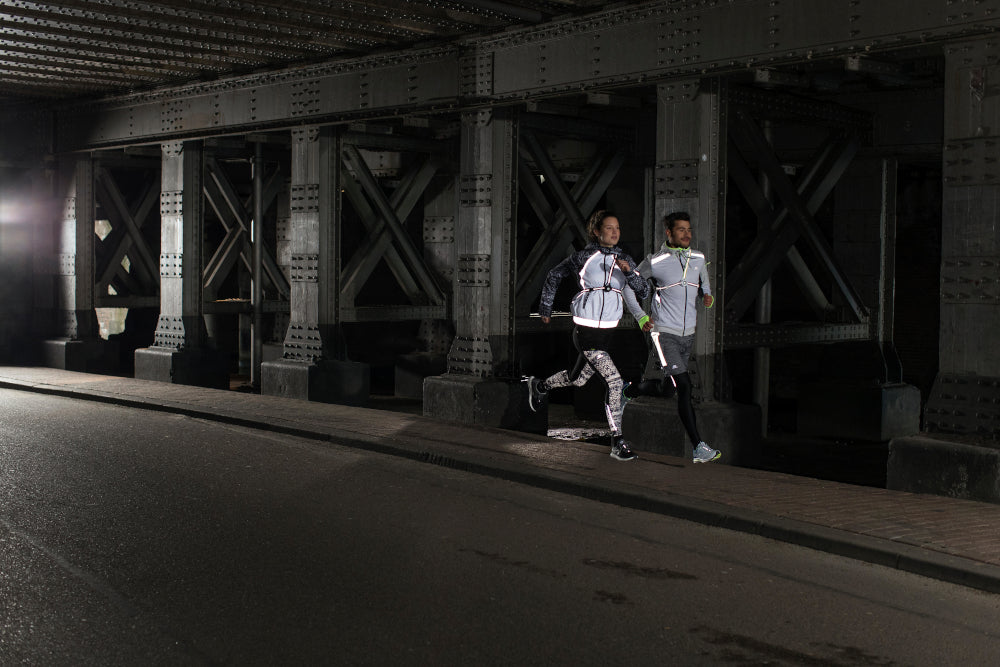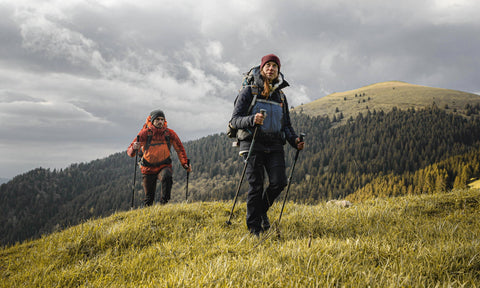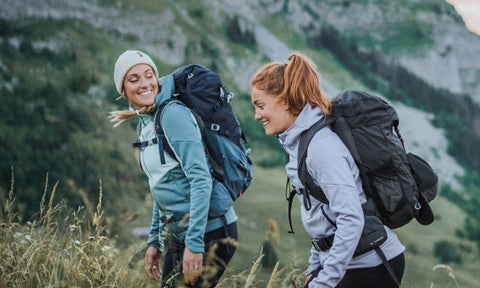1) Light is invaluable
See and be seen. Every night runner needs a headlamp or Kalenji's exclusive Run Light when they head out. First and foremost: never leave without it—even when training on marked out, relatively well lit terrain—and always bring a set of spare batteries. The top priority being never finding yourself alone in the dark in the middle of nowhere! Make sure you know how it works perfectly as well as how to replace the batteries. When you're working out and especially when you're competing, your movements may be less accurate than when you're sitting comfortably in your living room. So you need to be able to revive your light in the middle of the night with fingers that are likely stiff from the cold. It's possible—if not preferable—to wear both the Run Light and a headlamp if you decide to go running in the middle of the night (or at dusk) on an unprotected road. This doubles the beam of light for greater safety.
2) Dress for the weather
Night running is usually practiced during the coldest months of the year. This is why your gear is particularly important. Before a workout, even a brief one, you should choose a warm and breathable outfit and wear several thin layers of clothes. If you start to sweat heavily, take off a layer and tie it around your waist or put it in a pack.
Three priorities:
- Protect your extremities. Gloves and a hat are highly recommended—even if you'll have to take them off during a workout session or a race.
- Pick neon clothes so you can run at night as comfortably and safely as possible.
- Take your cellphone with you as well as some minimal supplies. It's important to be able to call emergency services and be self-reliant for a few hours if you suffer a bad fall or serious faintness.
3) Caution, technique, and a progressive approach
The route chosen for training or competing is obviously essential. Your first nighttime excursion shouldn't be a long solo adventure. Nor should you expect to run several dozen kilometres in a timed race without first participating in more modest events.
Three tips:
- Make sure to go out in stages, starting with comfortable outings on routes you took in daylight. This way, you can check the exact layout of the terrain, the running surface and possible shelter.
- Before your workout, make sure to check the weather—during races, organizers will usually make sure to keep competitors informed. It's best to cancel a workout session when heavy precipitation (rain or snow) is forecast. If you aren't very experienced, you should also avoid heading out when the temperature drops below freezing.
- Keep your strides shorter than normal so you can accurately verify where your feet land. Keep your eyes focused on the immediate area—except on high-quality paved roads—without forgetting to regularly check that you're not approaching any sudden or unexpected changes in terrain. It's best to slow down on slippery or muddy ground to avoid potentially serious falls.











